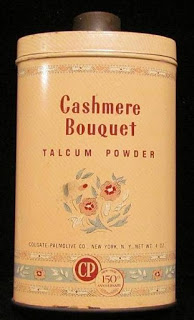Cracking the Code: Have We Found the Cause of "Idiopathic" Mesothelioma Among U.S. Women?

For years now the asbestos industry has denied full responsibility for mesothelioma among women in the U.S. They have argued that for most women, mesothelioma is “idiopathic,” meaning “we don’t know what caused it” but, parenthetically, wink-wink, “we didn’t.”
They cite to all kinds of junk science to support their litigation-driven argument. One report says that asbestos causes only 20% of mesothelioma diagnosed in U.S. women. [ E.N. Pavlisko and T.A. Sporn ]. While another posits that 60% of mesothelioma diagnosed in U.S. women is simply “idiopathic,” a conclusion derived from the simple fact that these women did not have “occupational” exposure (as opposed to “domestic,” or “environmental” or whatever bizarre box they construct to shift liability). [ A Lacourt, C Gramond, et al, Feb. 7, 2014 ]

If you’re an asbestos company, this is a great, albeit self-serving, argument. Most asbestos products sold in the U.S. contained mainly “chrysotile,” not “amphibole,” asbestos.
Not surprisingly, companies that made products with chrysotile asbestos routinely defend mesothelioma lawsuits based on this same argument. Namely, they seek to prove that the patient was exposed to amphibole asbestos, which they agree causes mesothelioma, at some time in his or her lifetime. They then try to convince the jury that it was the amphibole asbestos, not their “asbestos lite” chrysotile, that is the culprit.
Fortunately, most juries like solid evidence based on real science.
Recently, a jury in Los Angeles County considered these arguments and found them wanting. As we have reported, the Winkel case involved claims against Colgate-Palmolive, which sold Cashmere Bouquet, a talcum powder laced with asbestos, for over five decades
It turns out that Cashmere Bouquet was impregnated with both kinds of asbestos – chrysotile and amphibole, depending on which of the three mines they sourced their talc.
 As reported, this was the first case that made it to trial against Colgate-Palmolive. For years the talcum powder industry has spent millions to crush plaintiffs and their lawyers who dared to prove their case to a jury. As one of their lawyers warned us early on: if you continue this case, we will destroy you, your practice, your clients and your experts.
As reported, this was the first case that made it to trial against Colgate-Palmolive. For years the talcum powder industry has spent millions to crush plaintiffs and their lawyers who dared to prove their case to a jury. As one of their lawyers warned us early on: if you continue this case, we will destroy you, your practice, your clients and your experts.
Why did they fight so ruthlessly? Like their life depended on it? We think we know why.
Go back to that high number of conveniently unexplained U.S. women diagnosed with mesothelioma. Over 60%, they argued, were idiopathic. Well, idiopathic simply means “ we didn’t look hard enough.” Truth is, they didn’t want anyone taking a hard look at their talcum powder. You can’t blame them. If you do look hard, the talcum powder industry is in big trouble.
No matter what box you throw it in – “occupational,” “environmental,” “domestic” or whatever - it’s the worst kind of exposure. Millions of women used talcum powder. They used it daily. They liberally applied it all over their bodies. They sprinkled it on their undergarments. They powdered it on their babies. The intended use of the product generated gobs of visible, fine and respirable dust. And they never warned anyone that that fragrant fluffy white powder contained toxic and deadly asbestos.
Now questions are being asked. What other cancers are caused by talcum powder? For years women have been contracting ovarian cancer and we’ve never fully understood why. Is ovarian cancer linked to talcum powder? A jury recently answered “yes” to that question in a case against Johnson and Johnson (see Women Are Suing Johnson & Johnson Over Talcum Powder ).
Did we crack the code? For the last 50 years how many of those U.S. women with “idiopathic” mesothelioma regularly used talcum powder after showering? Our hunch is plenty. And the sad part is the talcum powder industry has gotten away with it.


